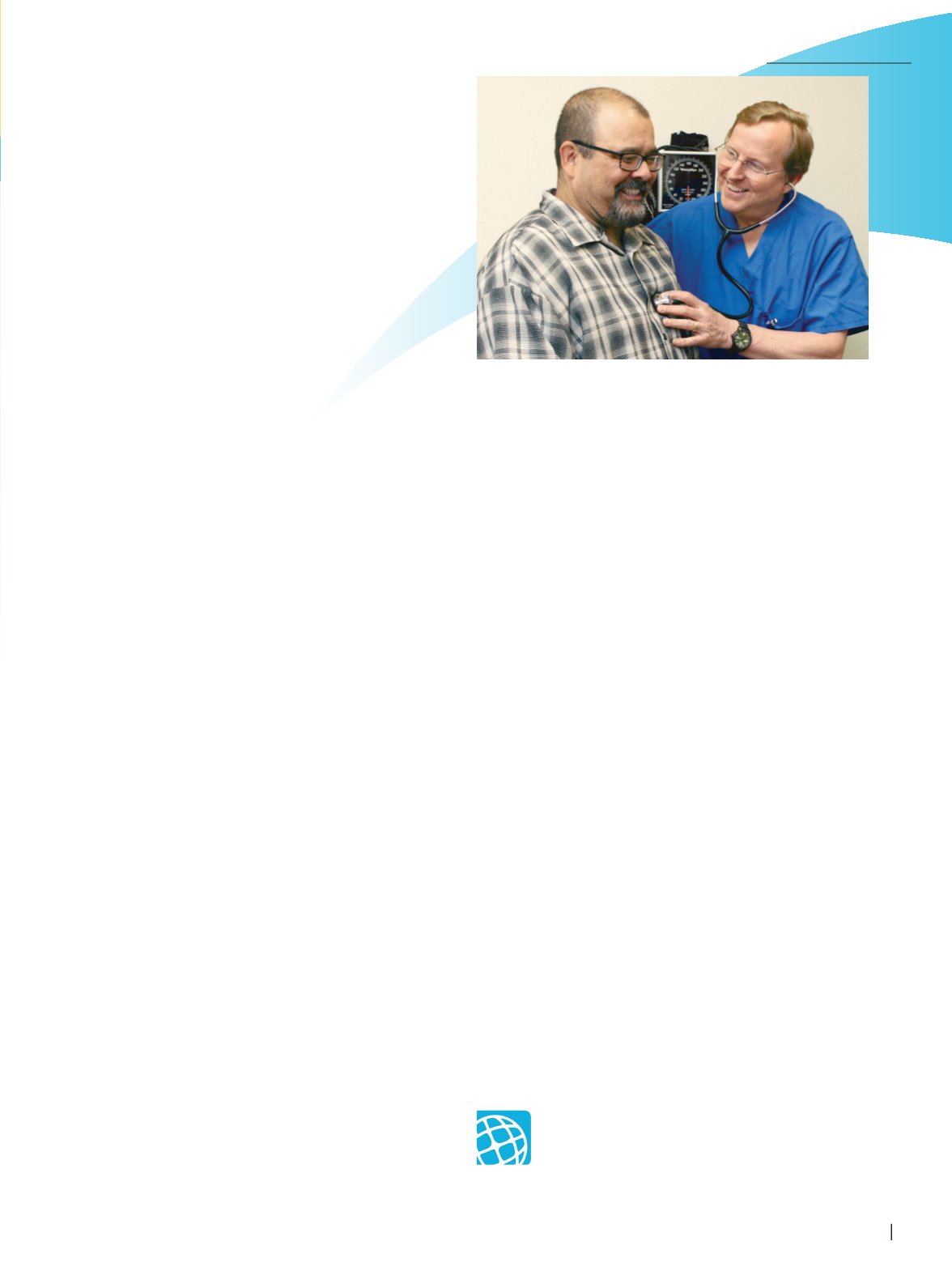

By Andrea Nagel
When most people think of a parachute,
they often
imagine colorful nylon strapped to the back of a daring
skydiver, hoping for the best as he or she freefalls
thousands of feet toward the earth. Although he may
not have felt the rush of the wind, heart attack survivor
Keith Sutherland may have felt the same excitement
as he took a different kind of leap when he signed up
for a clinical trial through Kootenai’s Heart Clinics
Northwest just over a year ago.
The Parachute Ventricular Partitioning Device is
a medical device for patients who have heart failure
following a heart attack. After a heart attack, many
people experience enlargement or even aneurysm of a
portion of the left ventricle of the heart, which causes
blood to settle in the heart. Because the heart cannot
effectively pump blood from the damaged portion,
patients often experience heart failure symptoms such
as fatigue and shortness of breath. These symptoms
can limit their ability to go about their daily life and
activities.
“We typically treat patients with this condition by
adjusting their medications, adding diuretics, insert-
ing a defibrillator, doing open-heart surgery to restore
blood flow, or even cutting out an aneurysm,” said
Ronald Jenkins, M.D., interventional cardiologist. “The
parachute device allows a minimally invasive alterna-
tive to surgery and offers the possibility to improve a
patient’s quality of life.”
H O W D O E S I T W O R K ?
The parachute device, which looks a lot like a min-
iature upside-down umbrella, is implanted in the
heart via a catheter. Once inside the left ventricle, the
parachute opens to fill the chamber and exclude the
nonfunctional heart segment. The device is built to
restore both the shape and the pumping function of
the heart. It is lightweight and can easily contract and
expand as the heart beats.
The clinical trial is studying over 1,500 patients
nationwide to determine if the device can slow the
progression of heart failure and improve the quality of
life for those who have had a heart attack.
“The change has been very subtle,” Keith said. “But
I’ve noticed I can do things that I couldn’t before, like
clean my house without having to take breaks. My
quality of life is getting back to normal.”
Keith said he was scared at first and almost didn’t
agree to participate in the trial, but Dr. Jenkins’ con-
fidence in the device encouraged him to give it a try.
And, according to Dr. Jenkins, the type of heart attack
Keith had, involving the apex (bottom point) of the
heart, made him an ideal candidate for the device.
“Of course it scared me,” he said. “But I thought, who
knows what will happen in the future. If my kids or
grandkids have problems, this could benefit them. It
makes me feel good to know that I could help someone.”
There are currently over 50 active clinical trials that
Heart Clinics Northwest is recruiting patients for, and
over 600 patients like Keith that are being monitored
as participants in ongoing trials. Dr. Jenkins said he
has strict requirements for clinical trials he agrees to
take part in.
“I have to really believe in it,” he said. “I look at
the benefits and the downside and look to see if it can
potentially benefit humanity as a whole. We’ve come
a long way in medicine, but we’re still dependent on
trials to continue to propel us forward.”
N E W C L I N I C A L T R I A L
M AY O F F E R A B E T T E R
Q U A L I T Y O F L I F E
L E A R N T H E L A T E S T
about clinical
trials available through Kootenai’s Heart
Clinics Northwest: Contact our research
department at
hcnw-research@kh.org
.
Ronald Jenkins, M.D., listens to Keith Sutherland’s heart during
a checkup.
New hope
for heart
patients
KH . ORG
15
CLINICAL TRIALS

















